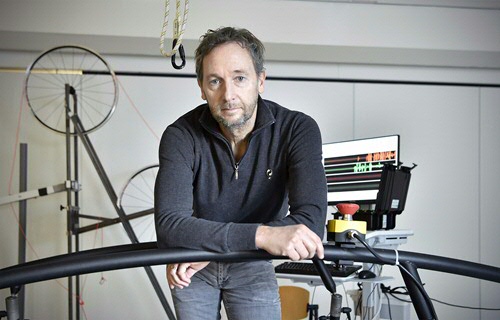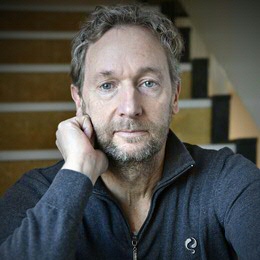The epidemic of physical inactivity
The result of the football match between the Netherlands and Estonia won’t remain in our memories for long – but the statement that the orange-clad players made against racism will. This is an example of the unifying power of sport. We talked with football fan and Professor of Sports, Performance and Innovation, Koen Lemmink, about the function of sport and movement in society.

Text: Martin Althof, Communication UG / Photos: Elmer Spaargaren
For Lemmink, sport is more than sport alone. ‘Together, sport creates an extra dimension of contact and connection. You witness the power of others, you have to work together and you might win or lose. These are important elements in shaping our society together.’
Movement and quality of life
But that’s not all. More and more evidence is arising that shows that moving well, and moving a lot, contributes to the quality of life of both young and old. Lemmink describes how long-term research into movement sciences has demonstrated that movement has a positive effect on the cognitive performance of children. ‘And we are convinced of the principle that “exercise is medicine”. Think about physical training for patients who are preparing for an operation, for example, or about running programmes for people with depression. We also know that a lot of chronic illnesses are linked to unhealthy lifestyles. In these cases, it would be ideal to intervene earlier, to prevent and to positively influence the course of illnesses.’
Sitting still and eating unhealthily
What awaits children who are born between 2020 and 2040? Lemmink does not feel at ease about this. Calls for the return of physical education teachers at primary schools have been made for a long time – but not much is changing. Why is movement not a much more important part of our society? ‘We are seeing a decline in children’s motor skills. Children are playing in the streets less and physical education is under pressure. What’s more, society is full of the wrong incentives: unhealthy food, busy cities, screens everywhere. I call this the epidemic of physical inactivity. Parents think that mathematics is the most important subject at primary school. But I think that it is movement.’
Elite sport helps recreational sport
Lemmink is involved with the sports policy of the Municipality of Groningen. ‘I always emphasize the importance of good infrastructure for sports organizations. And also the availability of safe and accessible places to play sport and to carry out physical activity, right in the middle of neighbourhoods. To this end, extra attention should be paid to people who are less easily able to use such facilities. But the deployment of elite athletes from Donar, Lycurgus and FC Groningen can also help in encouraging this. Elite sport helps recreational sport. This is the way it should be.’

Persevering is difficult
Sufficient physical activity and healthy eating: everyone knows that they should actually be doing this. But they also know that it is difficult to persevere. Lemmink sees that people take up various initiatives and make short-lived improvements – but then fall back into their old behaviours. He emphasizes that this is exactly why our social and physical environments are essential. ‘People are influenced by their social networks. Going to the gym together, running as a group or swimming. Preferably close to home; the future physical environment must contribute to this. We will need to (re)construct cities so that walking, cycling and recreational activities are given enough space. The Aletta Jacobs School of Public Health, a collaboration between the UG, Hanze University of Applied Sciences and the UMCG, is involved with this.’
Sensors in football shorts
Research into movement sciences generally focuses on the optimization of human movement and the physical performance of both young and old. Lemmink: ‘By using new technologies, it is possible to map out patterns of physical activity better. Take the example of the deployment of sensors in football shorts, for instance, or in wristbands worn by the elderly. We can gather so much data about human movement which we can then analyse. We have appointed a data scientist within the department of Human Movement Sciences especially for this. We also want to apply new knowledge that is being developed in this way to elite sports, for example, or to rehabilitation or ageing.’
Personalization of knowledge
But no two people are alike. ‘The next step is the personalization of knowledge,’ says Lemmink. ‘In this way, with data, we can get to know the individual better.’ Lemmink enthusiastically describes the example of a new project about resilience in athletes, in which physical and mental data are gathered daily within the football clubs of FC Groningen, PSV and Vitesse. The goal of the project is to find out which factors determine the resilience of elite football players and how to make sure to notice a decrease in resilience so that it is possible to intervene on time. ‘We can also use these insights in other sports. And they are applicable to workers, patients and the elderly. As you can see, there are several links between elite sport, recreational sport, physical activity and daily life.’
More news
-
17 November 2025
Artificial intelligence in healthcare
-
04 November 2025
AI Factory in Groningen advances digital sovereignty
-
03 November 2025
Menopause in perspective: How the media influences our perception
